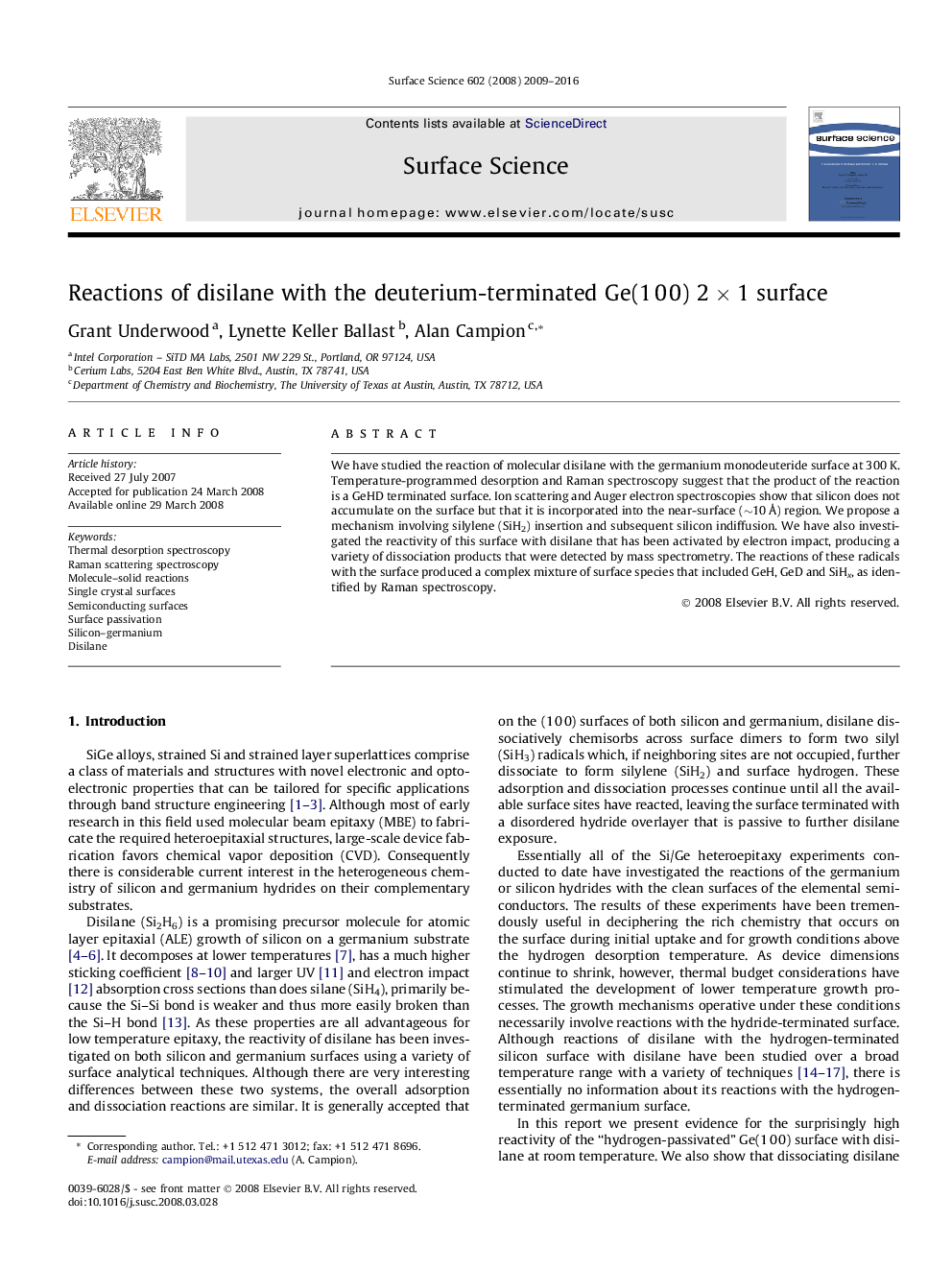| Article ID | Journal | Published Year | Pages | File Type |
|---|---|---|---|---|
| 5424478 | Surface Science | 2016 | 8 Pages |
Abstract
We have studied the reaction of molecular disilane with the germanium monodeuteride surface at 300Â K. Temperature-programmed desorption and Raman spectroscopy suggest that the product of the reaction is a GeHD terminated surface. Ion scattering and Auger electron spectroscopies show that silicon does not accumulate on the surface but that it is incorporated into the near-surface (â¼10Â Ã
) region. We propose a mechanism involving silylene (SiH2) insertion and subsequent silicon indiffusion. We have also investigated the reactivity of this surface with disilane that has been activated by electron impact, producing a variety of dissociation products that were detected by mass spectrometry. The reactions of these radicals with the surface produced a complex mixture of surface species that included GeH, GeD and SiHx, as identified by Raman spectroscopy.
Keywords
Related Topics
Physical Sciences and Engineering
Chemistry
Physical and Theoretical Chemistry
Authors
Grant Underwood, Lynette Keller Ballast, Alan Campion,
